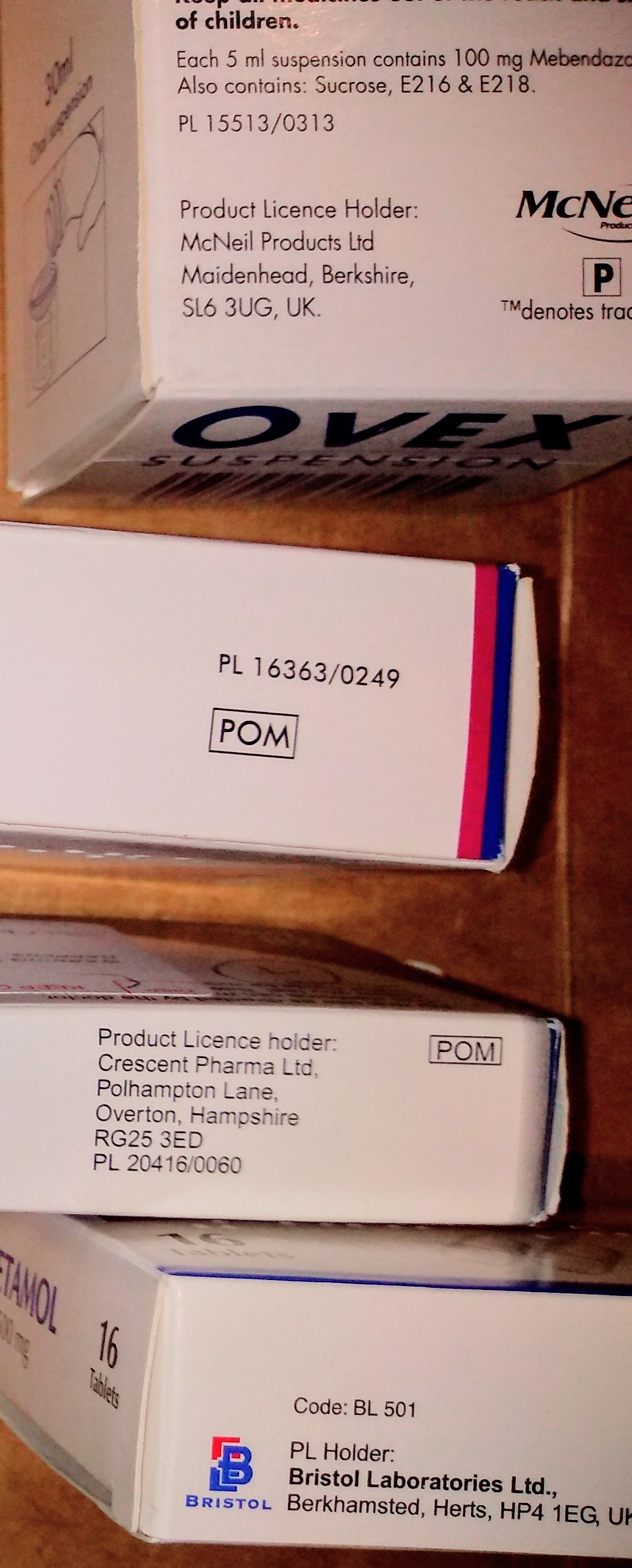|
Social Anxiety Disorder
Social anxiety disorder (SAD), also known as social phobia, is an anxiety disorder characterized by sentiments of fear and anxiety in social situations, causing considerable distress and impairing ability to function in at least some aspects of daily life. These fears can be triggered by perceived or actual scrutiny from others. Individuals with social anxiety disorder fear negative evaluations from other people. Physical symptoms often include excessive blushing, excessive sweating, trembling, palpitations, rapid heartbeat, muscle tension, shortness of breath, and nausea. Panic attacks can also occur under intense fear and discomfort. Some affected individuals may use alcohol or other drugs to reduce fears and inhibitions at social events. It is common for those with social phobia to self-medicate in this fashion, especially if they are undiagnosed, untreated, or both; this can lead to alcohol use disorder, eating disorders or other kinds of substance use disorder ... [...More Info...] [...Related Items...] OR: [Wikipedia] [Google] [Baidu] |
Psychiatry
Psychiatry is the medical specialty devoted to the diagnosis, treatment, and prevention of deleterious mental disorder, mental conditions. These include matters related to cognition, perceptions, Mood (psychology), mood, emotion, and behavior. Initial psychiatric assessment of a person begins with creating a Medical history, case history and conducting a mental status examination. Laboratory tests, physical examinations, and psychological tests may be conducted. On occasion, neuroimaging or neurophysiological studies are performed. Mental disorders are diagnosed in accordance with diagnostic manuals such as the ''International Classification of Diseases'' (ICD), edited by the World Health Organization (WHO), and the ''Diagnostic and Statistical Manual of Mental Disorders'' (DSM), published by the American Psychiatric Association (APA). The fifth edition of the DSM (DSM-5) was published in May 2013. Treatment may include psychotropics (psychiatric medicines), psychotherapy, su ... [...More Info...] [...Related Items...] OR: [Wikipedia] [Google] [Baidu] |
Hyperhidrosis
Hyperhidrosis is a medical condition in which a person exhibits excessive perspiration, sweating, more than is required for the Thermoregulation, regulation of body temperature. Although it is primarily a physical burden, hyperhidrosis can deteriorate the quality of life of the people who are affected, frequently leading to psychological, physical, and social consequences. Hyperhidrosis can lead to difficulties in professional fields, with more than 80% of patients experiencing moderate to severe emotional effects from the disease. This excess of sweat happens even if the person is not engaging in tasks that require muscular effort, and it does not depend on the exposure to heat. Common places to sweat can include underarms, face, neck, back, groin, feet, and hands. It has been called by some researchers 'the silent handicap'. Both ''diaphoresis'' and ''hidrosis'' can mean either ''perspiration'' (in which word sense, sense they are synonymous with ''sweating'') or ''excessive per ... [...More Info...] [...Related Items...] OR: [Wikipedia] [Google] [Baidu] |
Prescription Drugs
A prescription drug (also prescription medication, prescription medicine or prescription-only medication) is a pharmaceutical drug that is permitted to be dispensed only to those with a medical prescription. In contrast, over-the-counter drugs can be obtained without a prescription. The reason for this difference in substance control is the potential scope of misuse, from drug abuse to practising medicine without a license and without sufficient education. Different jurisdictions have different definitions of what constitutes a prescription drug. In North America, , usually printed as "Rx", is used as an abbreviation of the word "prescription". It is a contraction of the Latin word "''recipe''" (an imperative form of "recipere") meaning "take". Prescription drugs are often dispensed together with a monograph (in Europe, a Patient Information Leaflet or PIL) that gives detailed information about the drug. The use of prescription drugs has been increasing since the 1960s. Regula ... [...More Info...] [...Related Items...] OR: [Wikipedia] [Google] [Baidu] |
Cognitive Behavioral Therapy
Cognitive behavioral therapy (CBT) is a form of psychotherapy that aims to reduce symptoms of various mental health conditions, primarily depression, PTSD, and anxiety disorders. Cognitive behavioral therapy focuses on challenging and changing cognitive distortions (thoughts, beliefs, and attitudes) and their associated behaviors in order to improve emotional regulation and help the individual develop coping strategies to address problems. Though originally designed as an approach to treat depression, CBT is often prescribed for the evidence-informed treatment of many mental health and other conditions, including anxiety, substance use disorders, marital problems, ADHD, and eating disorders. CBT includes a number of cognitive or behavioral psychotherapies that treat defined psychopathologies using evidence-based techniques and strategies. CBT is a common form of talk therapy based on the combination of the basic principles from behavioral and cognitive psychology. I ... [...More Info...] [...Related Items...] OR: [Wikipedia] [Google] [Baidu] |
ICD-10
ICD-10 is the 10th revision of the International Classification of Diseases (ICD), a medical classification list by the World Health Organization (WHO). It contains codes for diseases, signs and symptoms, abnormal findings, complaints, social circumstances, and external causes of injury or diseases. Work on ICD-10 began in 1983, was endorsed by the Forty-third World Health Assembly in 1990, and came into effect in member states on January 1, 1993. ICD-10 was replaced by ICD-11 on January 1, 2022. While WHO manages and publishes the base version of the ICD, several member states have modified it to better suit their needs. In the base classification, the code set allows for more than 14,000 different codes and permits the tracking of many new diagnoses compared to the preceding ICD-9. Through the use of optional sub-classifications, ICD-10 allows for specificity regarding the cause, manifestation, location, severity, and type of injury or disease. The adapted versions may differ ... [...More Info...] [...Related Items...] OR: [Wikipedia] [Google] [Baidu] |
Substance Use Disorder
Substance use disorder (SUD) is the persistent use of drugs despite substantial harm and adverse consequences to self and others. Related terms include ''substance use problems'' and ''problematic drug or alcohol use''. Along with substance-induced disorders (SID) they are encompassed in the category substance-related disorders. Substance use disorders vary with regard to the average age of onset. It is not uncommon for those who have SUD to also have other mental health disorders. Substance use disorders are characterized by an array of mental, emotional, physical, and behavioral problems such as chronic guilt; an inability to reduce or stop consuming the substance(s) despite repeated attempts; operating vehicles while intoxicated; and physiological withdrawal symptoms. Drug classes that are commonly involved in SUD include: alcohol (alcoholism); cannabis; opioids; stimulants such as nicotine (including tobacco), cocaine and amphetamines; benzodiazepines; barbiturates; a ... [...More Info...] [...Related Items...] OR: [Wikipedia] [Google] [Baidu] |
Eating Disorders
An eating disorder is a mental disorder defined by abnormal eating behaviors that adversely affect a person's health, physical or mental health, mental health. These behaviors may include eating too much food or too little food. Types of eating disorders include binge eating disorder, where the person suffering keeps eating large amounts in a short period of time typically while not being hungry; anorexia nervosa, where the person has an intense fear of gaining weight and restricts food or overexercises to manage this fear; bulimia nervosa, where individuals eat a large quantity (binging) then try to rid themselves of the food (purging); pica (disorder), pica, where the patient eats non-food items; rumination syndrome, where the patient regurgitation (digestion), regurgitates undigested or minimally digested food; avoidant/restrictive food intake disorder (ARFID), where people have a reduced or selective food intake due to some psychological reasons; and a group of other specifi ... [...More Info...] [...Related Items...] OR: [Wikipedia] [Google] [Baidu] |
Alcohol Use Disorder
Alcoholism is the continued drinking of alcohol despite it causing problems. Some definitions require evidence of dependence and withdrawal. Problematic use of alcohol has been mentioned in the earliest historical records. The World Health Organization (WHO) estimated there were 283 million people with alcohol use disorders worldwide . The term ''alcoholism'' was first coined in 1852, but ''alcoholism'' and ''alcoholic'' are considered stigmatizing and likely to discourage seeking treatment, so diagnostic terms such as ''alcohol use disorder'' and ''alcohol dependence'' are often used instead in a clinical context. Alcohol is addictive, and heavy long-term alcohol use results in many negative health and social consequences. It can damage all the organ systems, but especially affects the brain, heart, liver, pancreas, and immune system. Heavy alcohol usage can result in trouble sleeping, and severe cognitive issues like dementia, brain damage, or Wernicke–Korsakoff ... [...More Info...] [...Related Items...] OR: [Wikipedia] [Google] [Baidu] |
Self-medication
Self-medication, sometime called do-it-yourself (DIY) medicine, is a human behavior in which an individual uses a substance or any exogenous influence to self-administer treatment for physical or psychological conditions, for example headaches or fatigue. The substances most widely used in self-medication are over-the-counter drugs and dietary supplements, which are used to treat common health issues at home. These do not require a doctor's prescription to obtain and, in some countries, are available in supermarkets and convenience stores. The field of psychology surrounding the use of psychoactive drugs is often specifically in relation to the use of recreational drugs, alcohol, comfort food, and other forms of behavior to alleviate symptoms of mental distress, stress and anxiety, including mental illnesses or psychological trauma. Such treatment may cause serious detriment to physical and mental health if motivated by addictive mechanisms. In postsecondary (university ... [...More Info...] [...Related Items...] OR: [Wikipedia] [Google] [Baidu] |
Psychoactive Drug
A psychoactive drug, psychopharmaceutical, mind-altering drug, consciousness-altering drug, psychoactive substance, or psychotropic substance is a chemical substance that alters psychological functioning by modulating central nervous system activity. Psychoactive and psychotropic drugs both affect the brain, with psychotropics sometimes referring to psychiatric drugs or high-abuse substances, while “drug” can have negative connotations. Designer drug, Novel psychoactive substances are designer drugs made to mimic illegal ones and bypass laws. Psychoactive drug use dates back to prehistory for medicinal and consciousness-altering purposes, with evidence of widespread cultural use. Many animals intentionally consume psychoactive substances, and some traditional legends suggest animals first introduced humans to their use. Psychoactive substances are used across cultures for purposes ranging from medicinal and therapeutic treatment of Mental disorder, mental disorders and pain, ... [...More Info...] [...Related Items...] OR: [Wikipedia] [Google] [Baidu] |
Alcohol (drug)
Alcohol, sometimes referred to by the chemical name ethanol, is the active ingredient in alcoholic drinks such as beer, wine, and distilled spirits (hard liquor). Alcohol is a central nervous system (CNS) depressant, decreasing Action potential, electrical activity of neurons in the brain, which causes the characteristic effects of alcohol intoxication ("drunkenness"). Among other effects, alcohol produces euphoria, anxiolytic, decreased anxiety, increased sociability, sedation, and impairment of cognitive, memory, motor control, motor, and sense, sensory function. Alcohol has a variety of adverse effects. Short-term effects of alcohol consumption, Short-term adverse effects include generalized impairment of neurocognitive function, dizziness, nausea, vomiting, and symptoms of hangover. Alcohol is addiction, addictive and can result in alcohol use disorder, Substance dependence, dependence, and Alcohol withdrawal syndrome, withdrawal upon cessation. The long-term effects of ... [...More Info...] [...Related Items...] OR: [Wikipedia] [Google] [Baidu] |
Panic Attack
Panic attacks are sudden periods of intense fear and Comfort, discomfort that may include palpitations, otherwise defined as a Tachycardia, rapid, Arrhythmia, irregular Heart rate, heartbeat, Hyperhidrosis, sweating, chest pain or discomfort, shortness of breath, Tremor, trembling, dizziness, Hypoesthesia, numbness, confusion, or a sense of impending doom or loss of control. Typically, these symptoms are the worst within ten minutes of onset and can last for roughly 30 minutes, though they can vary anywhere from seconds to hours. While they can be extremely distressing, panic attacks themselves are not physically dangerous. The ''Diagnostic and Statistical Manual of Mental Disorders, Fifth Edition'' (DSM-5) defines them as "an abrupt surge of intense fear or intense discomfort that reaches a peak within minutes and during which time four or more of the following symptoms occur." These symptoms include, but are not limited to, the ones mentioned above. Panic attacks function as ... [...More Info...] [...Related Items...] OR: [Wikipedia] [Google] [Baidu] |




